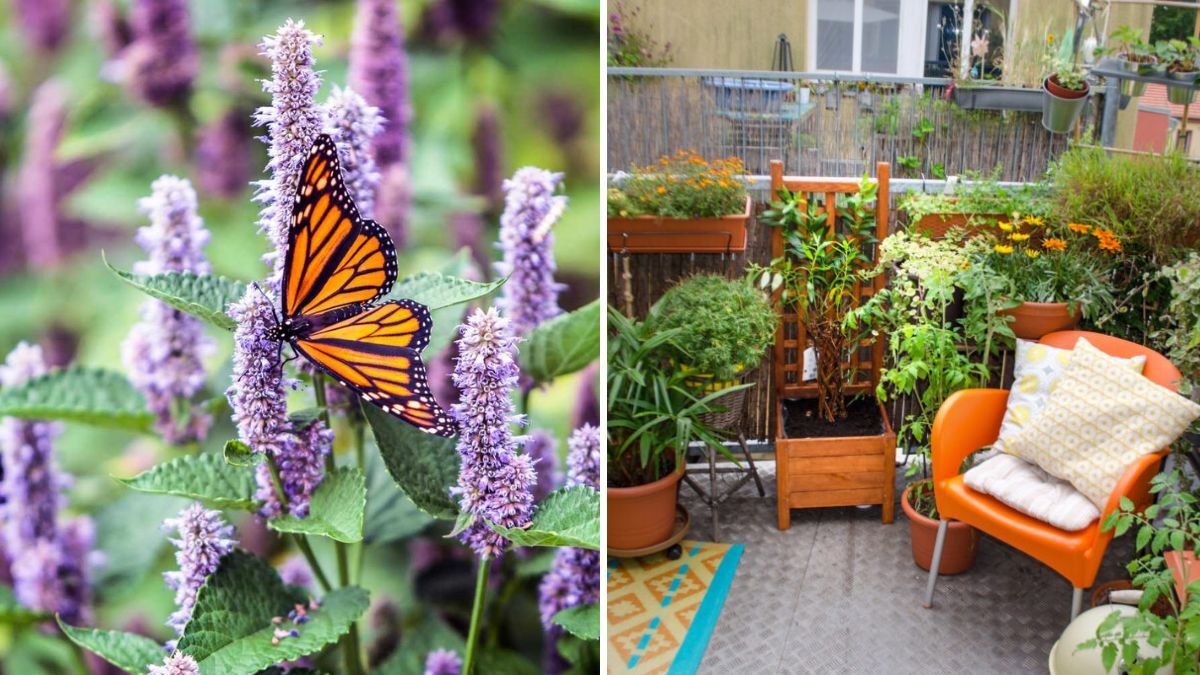Urban gardening has transformed balconies into vibrant mini-oases that not only beautify homes but also support local ecosystems. One of the most valuable contributions balcony gardens can make is attracting pollinators—bees, butterflies, hummingbirds, and beneficial insects—that are essential for plant reproduction and biodiversity. By choosing the right plants, balcony gardeners can enjoy colorful blooms, delicious herbs, and a thriving pollinator-friendly environment.
This detailed guide explores 10 balcony plants that attract pollinators, their unique features, planting requirements, and tips for maintaining a balcony garden that supports these vital creatures.
1. Lavender (Lavandula spp.)
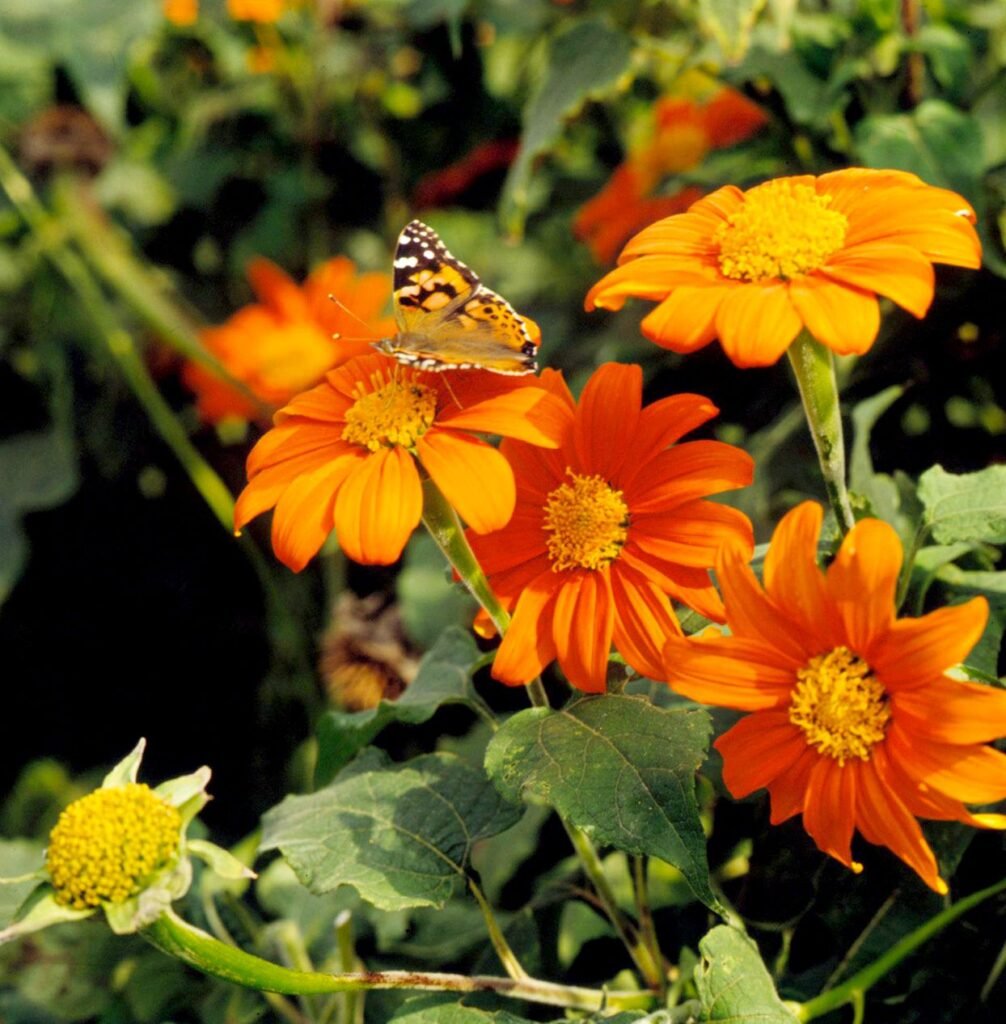
Why Pollinators Love It: Lavender produces abundant nectar that attracts bees and butterflies, particularly honeybees and bumblebees.
Planting Tips:
- Prefers full sun and well-draining soil.
- Water moderately—allow soil to dry slightly between watering.
- Ideal for pots or trough planters.
Benefits:
- Fragrant flowers enhance your balcony’s sensory appeal.
- Drought-tolerant, low-maintenance, and long-blooming.
2. Bee Balm (Monarda didyma)
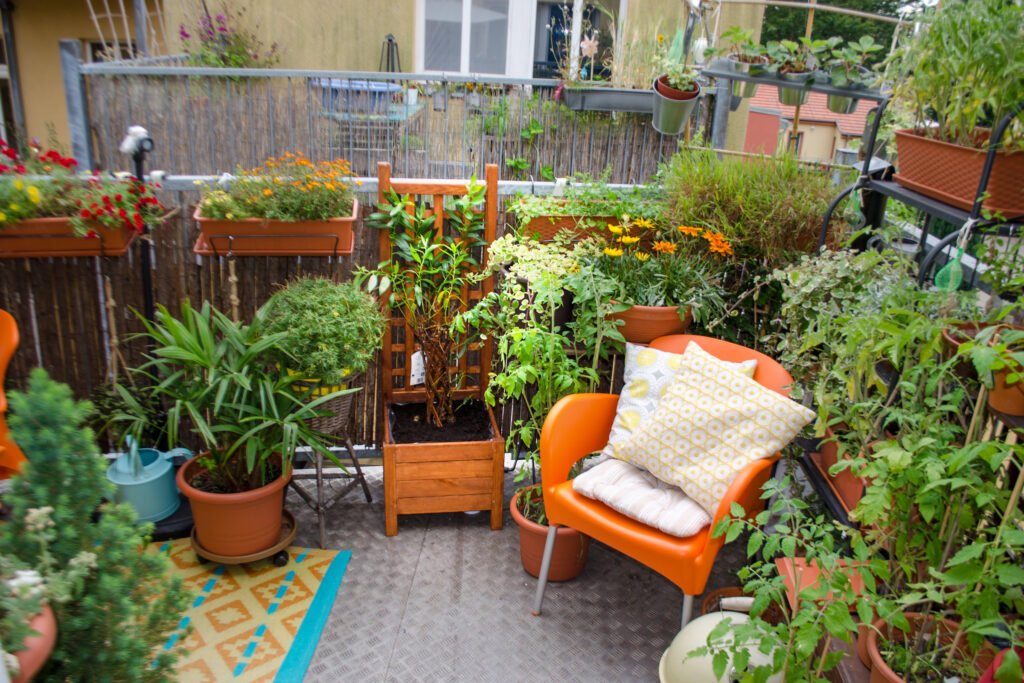
Why Pollinators Love It: As the name suggests, bee balm is irresistible to bees, butterflies, and hummingbirds. Its tubular flowers provide easy access to nectar.
Planting Tips:
- Needs 6–8 hours of sunlight daily.
- Prefers moist, fertile soil.
- Can grow aggressively; use containers to control spread.
Benefits:
- Vibrant red, pink, or purple blooms.
- Excellent for adding height and color contrast to balcony gardens.
3. Marigolds (Tagetes spp.)
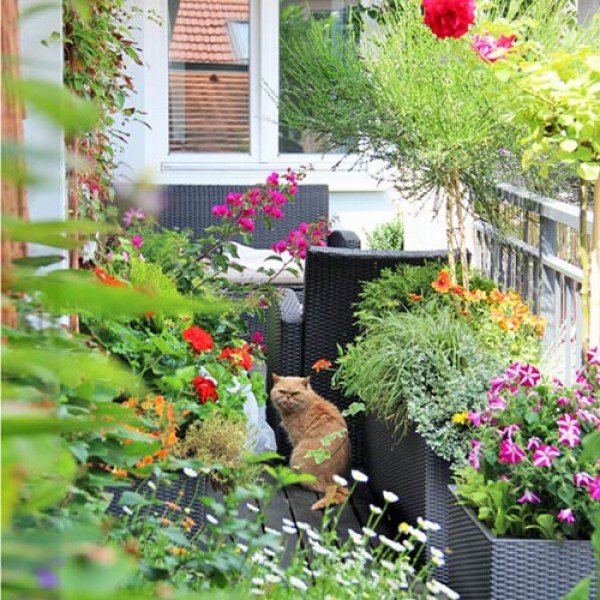
Why Pollinators Love It: Marigolds attract bees and hoverflies while also acting as a natural pest deterrent.
Planting Tips:
- Full sun exposure is essential.
- Well-draining soil and regular watering keep blooms healthy.
- Ideal for small pots, window boxes, or hanging baskets.
Benefits:
- Bright yellow and orange flowers enhance balcony aesthetics.
- Compact varieties suit limited spaces.
4. Butterfly Bush (Buddleja davidii)
Why Pollinators Love It: Butterfly bush produces fragrant clusters of nectar-rich flowers, drawing butterflies and bees.
Planting Tips:
- Needs full sun and moderately fertile soil.
- Prune regularly to maintain shape and encourage flowering.
- Suitable for medium to large balcony containers.
Benefits:
- Long blooming season.
- Creates a butterfly-friendly sanctuary in urban spaces.
5. Coneflowers (Echinacea spp.)
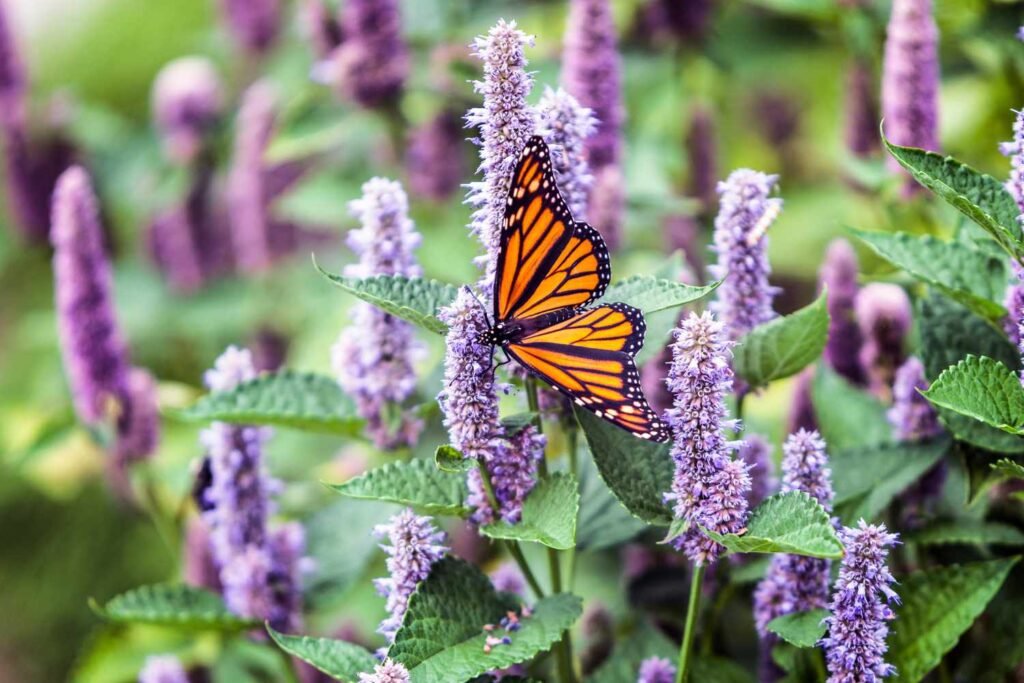
Why Pollinators Love It: Coneflowers are native nectar sources for bees, butterflies, and even some hummingbirds.
Planting Tips:
- Requires full sun and well-draining soil.
- Tolerates moderate drought once established.
- Ideal for medium to large pots.
Benefits:
- Attracts pollinators while adding a splash of purple, pink, or white.
- Drought-resistant and low-maintenance.
6. Zinnias (Zinnia elegans)
Why Pollinators Love It: Zinnias produce vibrant blooms that provide nectar for bees, butterflies, and other beneficial insects.
Planting Tips:
- Full sun is essential for abundant flowering.
- Well-drained soil; water moderately.
- Deadhead spent flowers to prolong blooming.
Benefits:
- Available in a variety of colors and sizes, perfect for small balcony pots.
- Quick-growing, making them ideal for beginner gardeners.
7. Salvia (Salvia spp.)
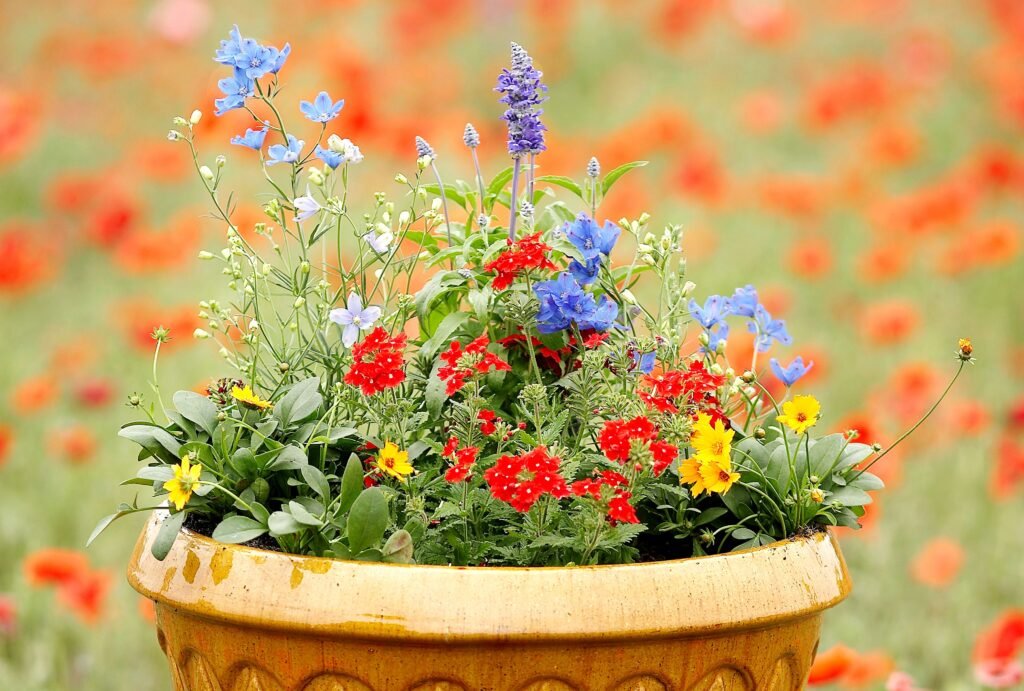
Why Pollinators Love It: Salvias are highly attractive to hummingbirds, bees, and butterflies due to their tubular, nectar-rich flowers.
Planting Tips:
- Full sun or partial shade works well.
- Well-drained soil with moderate watering.
- Prune spent flowers to encourage new blooms.
Benefits:
- Available in red, purple, blue, and pink shades.
- Long flowering season supports pollinators throughout summer.
8. Nasturtiums (Tropaeolum majus)
Why Pollinators Love It: Nasturtiums produce bright, edible flowers that attract bees and butterflies. They also act as companion plants, deterring pests naturally.
Planting Tips:
- Prefers full sun but tolerates partial shade.
- Well-draining soil; water moderately.
- Trailing varieties are excellent for hanging baskets.
Benefits:
- Edible flowers can be used in salads or garnishes.
- Adds trailing beauty to balcony edges.
9. Herbs with Nectar-Rich Flowers
Certain herbs are pollinator magnets, providing both culinary and ecological benefits:
- Basil (Ocimum basilicum): Attracts bees when flowering.
- Thyme (Thymus vulgaris): Small flowers are highly appealing to pollinators.
- Mint (Mentha spp.): Bees love the tiny blooms, but contain vigorous growth—use containers to contain.
- Oregano (Origanum vulgare): Purple flower spikes attract bees and butterflies.
Planting Tips:
- Full sun with regular watering.
- Containers prevent invasive growth.
Benefits:
- Fresh herbs for cooking.
- Continuous nectar source for pollinators.
10. Petunias (Petunia spp.)
Why Pollinators Love It: Petunias offer brightly colored flowers with accessible nectar for bees and butterflies.
Planting Tips:
- Full sun is best.
- Well-draining soil and moderate watering.
- Deadhead to encourage continuous flowering.
Benefits:
- Ideal for hanging baskets or balcony railing boxes.
- Long flowering season keeps pollinators visiting for months.
Creating a Pollinator-Friendly Balcony Garden
To maximize the impact of these plants, consider:
- Diverse Planting: Mix flowering types and colors to attract a variety of pollinators.
- Succession Planting: Stagger planting times to provide continuous blooms throughout the season.
- Water Source: Provide shallow water dishes for bees and butterflies.
- Avoid Pesticides: Chemicals can harm pollinators—opt for natural pest control methods.
- Container Placement: Place flowering plants near railing edges or windows to give pollinators easy access.
A combination of thoughtful planting, watering, and care creates a balcony ecosystem that supports pollinators year-round.
Conclusion
Balcony gardens can become miniature havens for pollinators, supporting bees, butterflies, and other beneficial insects while providing home-grown flowers, herbs, and vegetables. The 10 balcony plants highlighted—lavender, bee balm, marigolds, butterfly bush, coneflowers, zinnias, salvia, nasturtiums, nectar-rich herbs, and petunias—offer abundant nectar, vibrant colors, and resilience for container gardening.
Key takeaways:
- Choose a mix of nectar-rich, heat-tolerant plants.
- Ensure proper sunlight, watering, and soil conditions.
- Use containers suitable for growth and root health.
- Avoid chemical pesticides to protect pollinators.
- Plan for continuous flowering to support pollinators all season.
By following these guidelines, balcony gardeners can create sustainable, vibrant gardens that benefit both humans and the environment, turning even small urban spaces into pollinator-friendly paradises.
